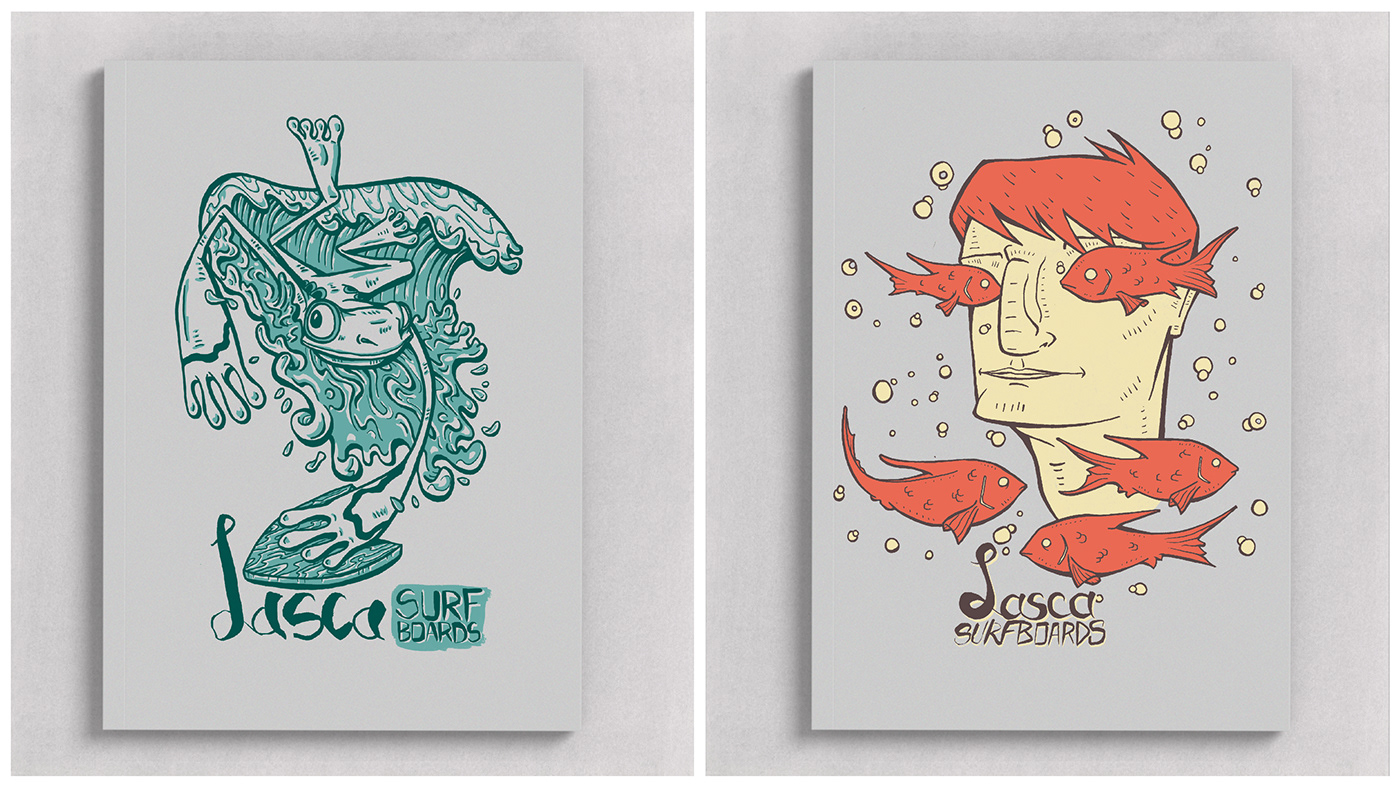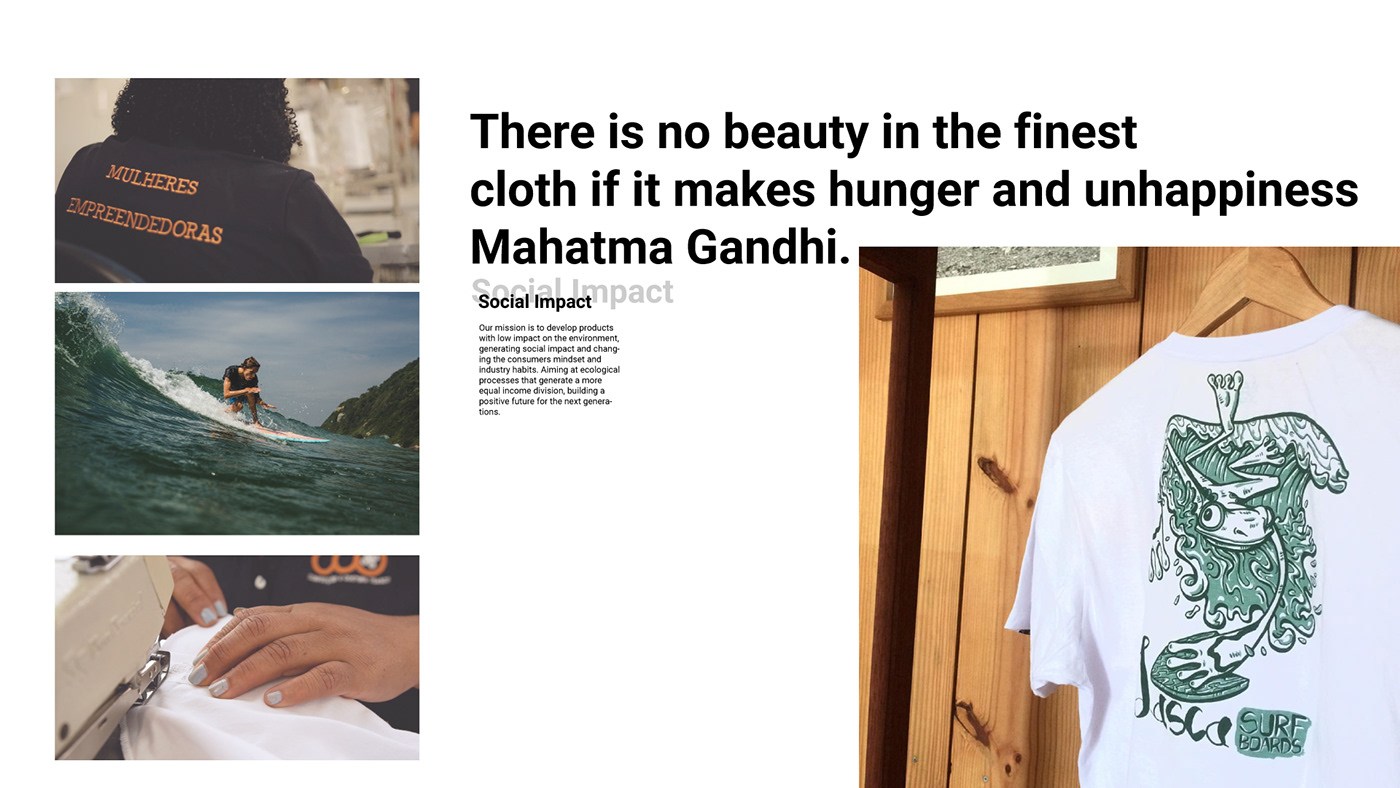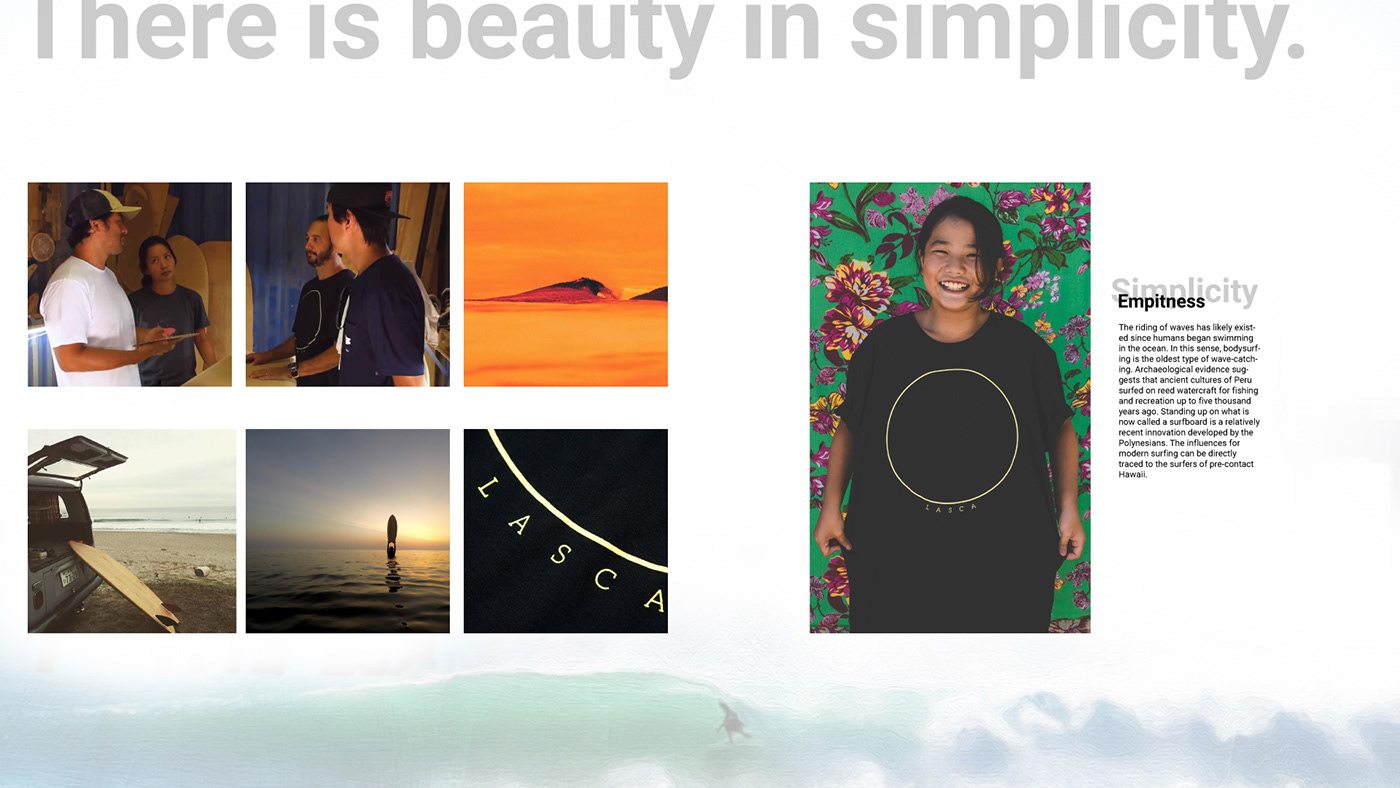
Green Minds: is an apparel surfwear brand based in Brazil. It develops ecologic apparel clothes and accessories seeking the minimal environment impact possible. Green Minds is also an ethical brand, always trying to work with fair trade, supporting humble communities and small artisans. Considering it is the first e-commerce of sustainable surfing products along the Brazilian industry, Green Minds also offers products from partners that share same principals and ideals of sustainable practices.
Lasca Woodworks: Lasca is a wood boards eco brand based in Brasil. The history started with Rodrigo Matsuda and his wife Andreia Matsuda. They founded Lasca Woodworks, a eco company focused on artisanal work in search of the true spirit of surfing.
The Mission: Create the collab apparel capsule collection between Green Minds and Lasca Woodworks
Services: Product Design > Product Development > Garment production > Digital marketing and Digital campaigns
Process: I am going to walk you through the process of the development of this collaboration capsule made between Green Minds and Lasca Woodworks.
Of course, that, developing a collection involves many more steps and process than, the ones showed in this portfolio.
But the idea is just to give a bit of taste on how was the development of this capsule involving two ecological brands and deep intention to create products that actually can change habitual habits and bring conscious to costumer. Moreover, offer options for those ones that are already on the track of the sustainability mind.
The revolution has begun! Enjoy it.
RESEARCH AND INSPIRATION
For any kind of collection, does not matter if they are ecological or not, the kick in to start the collection is planning and researching.
Planning how many styles you need, projecting costs to find out margins, understand about fabric minimum buying quantities, create and develop you supply chain, etc…
The images below you will see my process of researching. As the first step after planning, I collect several images seeking products, trims, labels, colors, fabric, silhouettes and fits, etc…
This is an extensive research without any filters. Only seeking what is cool and look good. The research includes, web, Pinterest, graphics from any source (does not matter the segments), fabrics, street research, books, etc…
Once the extensive research is made, I organize the research by segments: products, colors, fabrics, labels, trims, etc…
Then I put together a creative inspirational moodboard to show and inspire the atmosphere of the collection and the elements to direct the creative paths.
See images below.


FABRICS
Usually at the same time you create your creative moodboards you also create your color pallets and you color stories. However, I invert the process. I start to research and choose the fabrics to be used along the collection because usually when it comes to ecological fabrics, the offer is restricted and the color pallets available for those fabrics are extremely smaller if you compare with regular fabrics.

COLORS
Color story is not based only on research. Once you have decided the fabrics you will use and checked the available colors, you will create color combos to make sure your collection will present consistency, clarity and, of course, needs to be attractive.

SKETCHES
We already have our research and moodboards organized helping us to keep clarity along the development process. Fabrics decided and color pallets defined planning our color combos.
Now it is time dive into graphics.
Graphics must be the first segment to be designed. Because the graphics will provide the information necessary to develop labels, trims, prints, etc… Also help to keep consistency along the collection.
Usually I start it off with another inspirational research focused only onto graphics.
Again, I organize the research dividing the graphics into segments: Geometric, typography / lettering, florals, textures, elements, nature, illustration, etc..
Probably, by the end of the research journey you have already decided the paths you are going to go.
Below you can see my sketches and thumbnails, to later on move to computer.

GRAPHICS
At this stage I create a small but attractive presentation, including research, moodboards, sketches, graphics, and all created until this point to show Lasca crew (or if you have a client, this would be your client) the direction of the collection and the graphics.
Once you have the approvals and the directions are decided, it is time to dive into loud music and create graphics (Have Fun!!!)
Below images of some of the graphics created for tshirt prits, size labes, trims, and so on.






TRIMS
Before starts the garment development, the first thing to design is always the trims, due to the production timeline.
Trims take a reasonable time to develop, produce samples, make alterations if necessary and usually 30 to 45 days to get them produced and ready to apply onto the garments.
Suppliers are called, trims materials are chosen and here I show specification sheets including necessary information to create the labels.
In my case, as we are an ecologic brand, we developed woven labels using bamboo fibers. Produced using old machines giving to it a retro atmosphere.


HEY CALLEB
Developing an apparel collection is not just about using all your skills, but we have to play as an art director too. It is very positive to bring in external help to ensure that we have an appropriate variety and we can enrich our product offering.
To enrich our collection we had the incredible help of Calleb Morrys.
Calleb is an amazing and talented Illustrator from Atlanta, USA.
www.heycaleb.com


PRODUCT SPECS
Graphics are done, fabrics decided, trims samples under production, color combos ready to rock!
Now it is time to develop products.
This is the most exciting time of the process. It is the time to gather all the information created previously and put together amazing products.
Below I show two technical specification sheets: One t-shirt produced with the finest organic cotton from India and a 5 panel cap made out of recycled cotton.
At the specs (technical specification sheets) is where you put all the information necessary to develop the products, including sewing details, print position, embroideries or printing technics, pantones numbers and colors, etc…
Note: When it comes to garment development it is essential to use pantone numbers. Pantones are the universal language of colors.






OVERVIEW / LINE UP
I believe the last step of the design process is to create a map where you can see your full collection. I call these maps as “overviews” or “lineup”.
Creating an overview is extremely necessary to make sure you have consistency between your styles and clarity along your collection.
It is also will be used to show the full offer to your client. (In my case to show the Lasca crew all the styles and discuss if we have anything missing or if any alteration is necessary.



What a journey folks!
To finalize our collab collection presentation you can see below some images used to create marketing campaigns, social media campaigns and e-commerce images.
Make sure you visit us at www.greenminds.com.br.
And follow us at Instagram: @greenmindsbrasil
Facebook: Green Minds Brasil.
I hope you enjoy the products and help us to change the world.

















